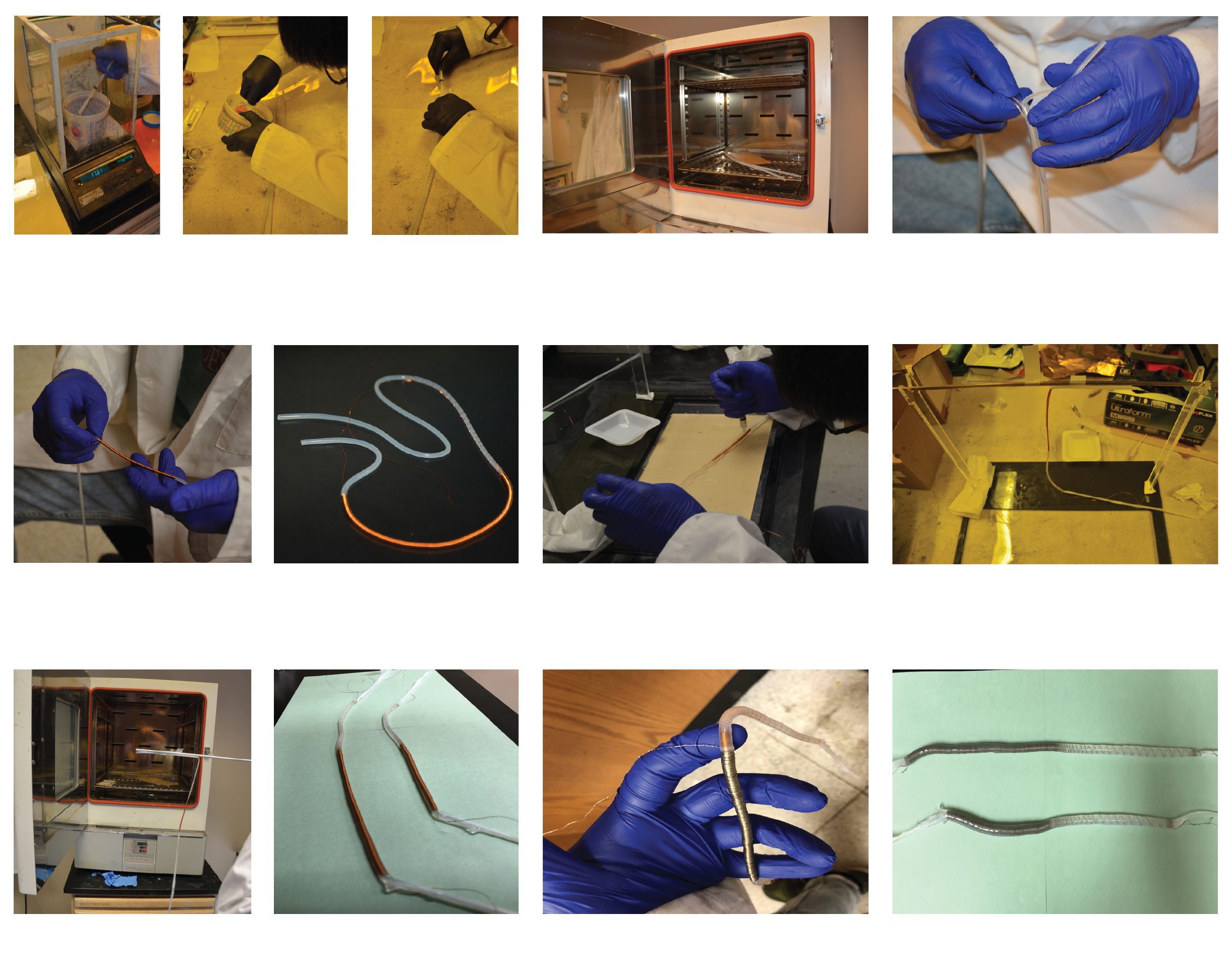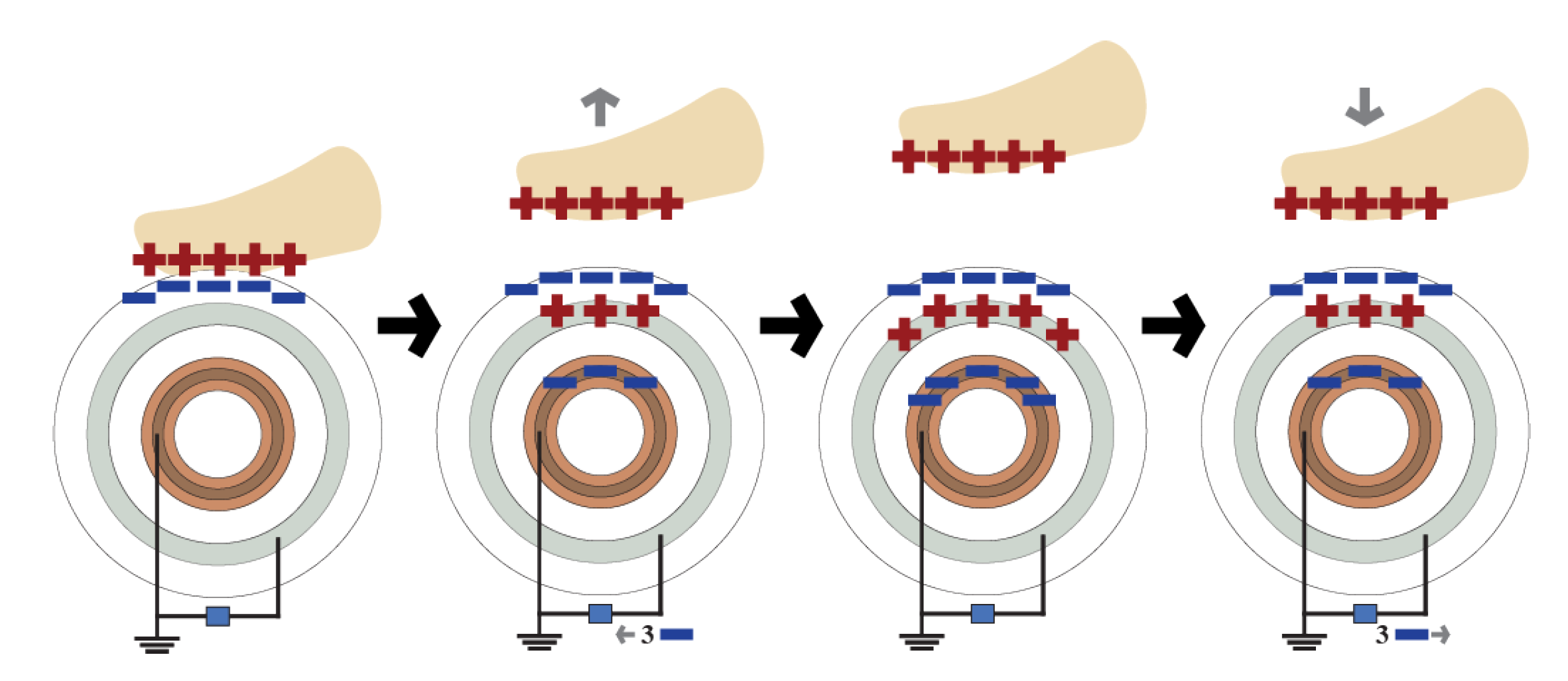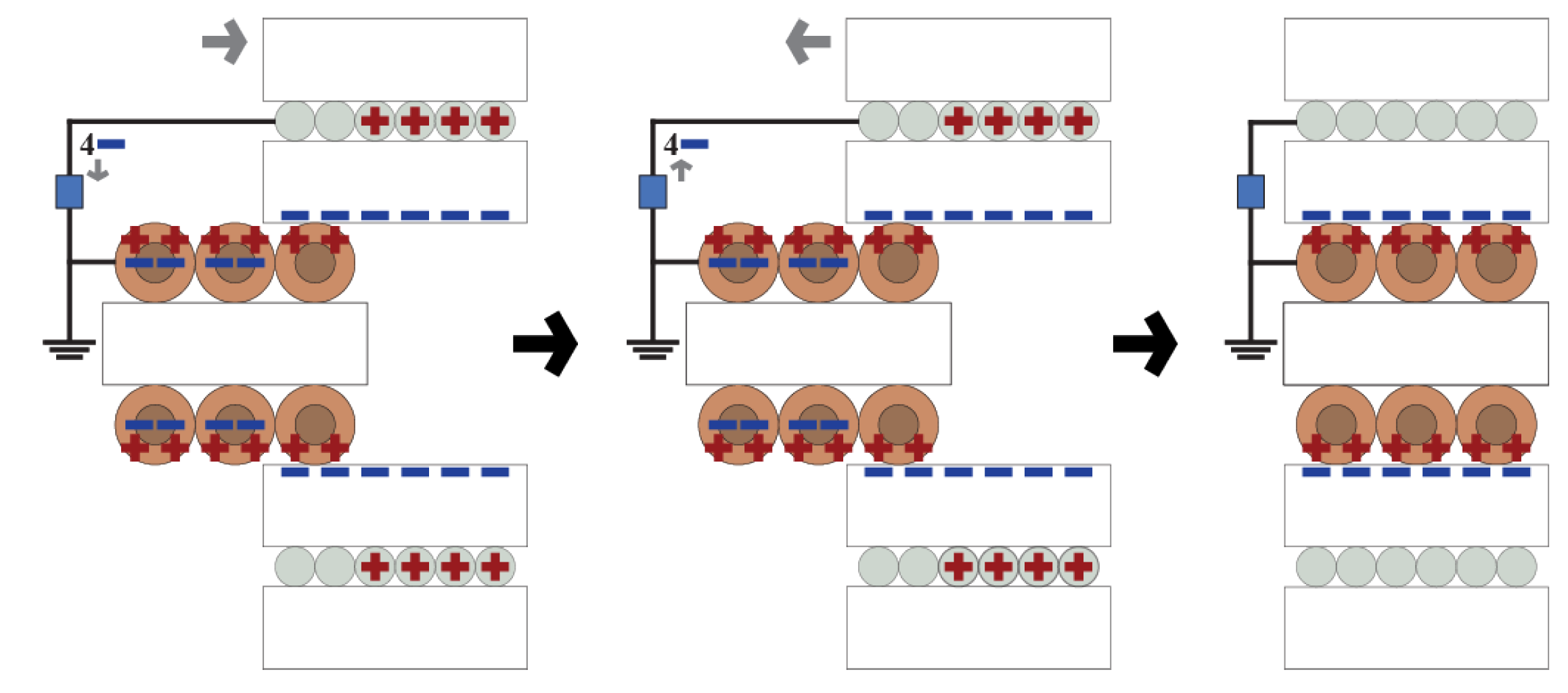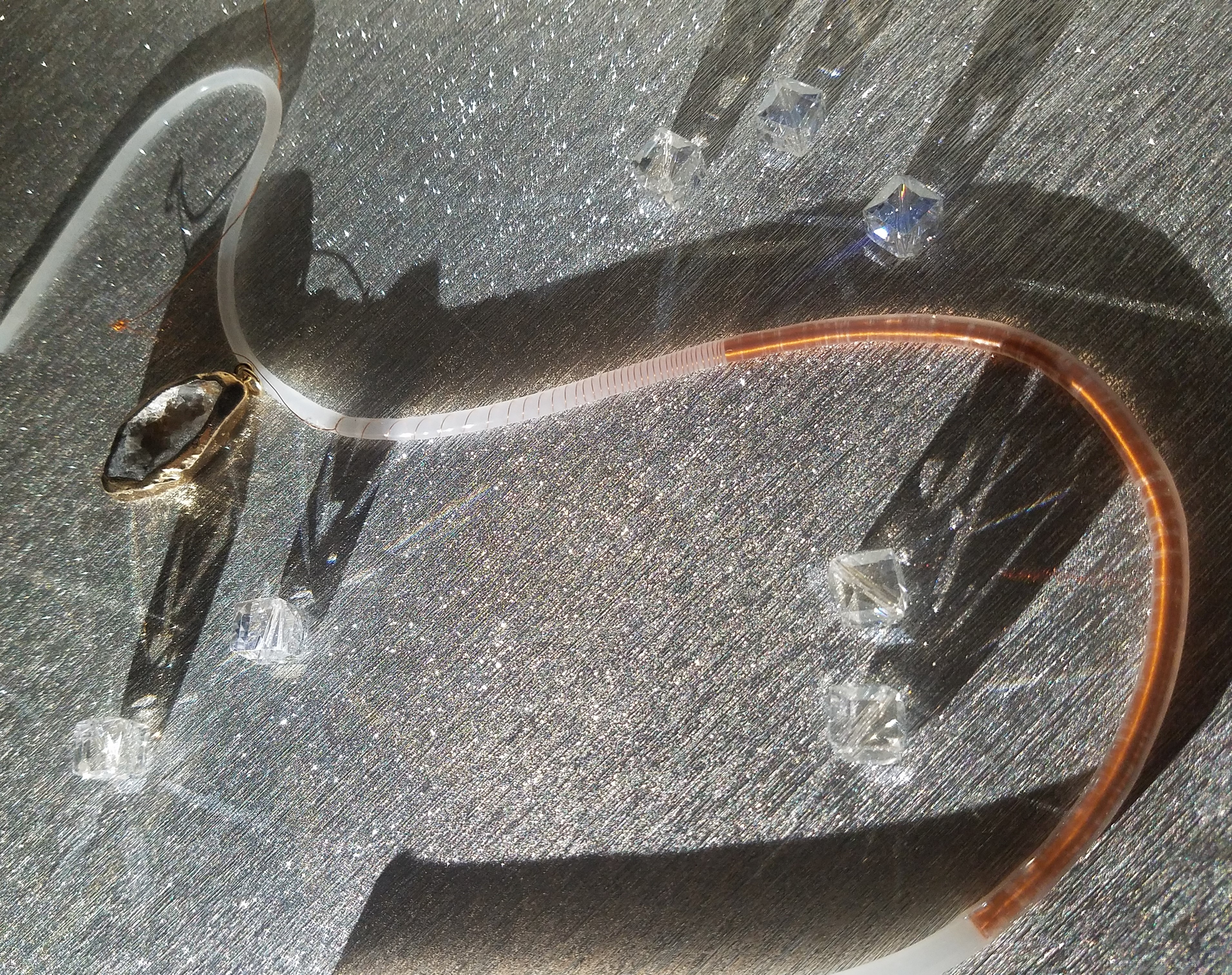-
DIY Approach - Sensor Fabrication Process
10/22/2018 at 03:38 • 0 commentsStep 1 - Silicone rubber as dielectric material:
For the proper stiffness, silicone rubber and Polydimethylsiloxane(PDMS) were mixed. We have chosen low-cost commercial materials to allow users for manual fabrication in any environment even out of lab environment. Commercial silicone rubber and PDMS have two parts, a base (B) and a curing (C) agent. For the silicone rubber, these two parts are mixed in 1:1 weight ratio and stirred for 3 minutes. For PDMS, the two parts are mixed in 10:1 weight ratio (B:C) and stirred for 5 minutes. Then, both solutions are mixed in a 4:1 weight ratio (silicone:PDMS) and stirred for 3 minutes.
Step 2 - Inner core tube:
The prepared solution in step 1 is poured into a plastic tube. The length and thickness of core layer is up to your project. In our final optimized model, we made such silicone core layer with 2.5 mm thickness and 30 cm length. Silicone got solidified in an oven at 60 °C for 5 minutes. It also, can be cured in room temperature in 4 hours. At this stage we peeled the plastic tube, resulting in a solid pure tube-shape silicone rubber.
Step 3 - Winding Copper thread around core layer:
A commercially available conductive Polyvinyl Alcohol (PVA) coated Copper wire with 0.17 mm diameter was tightly wound spirally around the core silicone rubber. Such spiral winding should be dense enough to provide maximum contact area between each single turn of conductive thread around the dielectric material.
Step 4 - Encapsulating the wound copper wire with silicone rubber:
We laid down the assembly on a flat surface and used a syringe to apply the prepared silicone solution in step 1 over the entire surface of prepared assembly in step 3. This structure was then hung vertically for five minutes and then cured for five minutes in an oven at 60°C.
Step 5: Winding Nylon thread around assembly:
A commercially-available silver-coated nylon yarn with 0.18mm diameter is used as the outer electrode. It was also tightly wound around the whole assembly. The fabrication process is similar to step 3.
Step 6 - Encapsulate the whole assembly with silicone rubber solution:
We repeated step 4 to coat the entire assembly with silicone rubber solution. The final prototype has 4.5 mm thickness and 30 cm length.
We repeated step 4 to coat the entire assembly with silicone rubber solution. The final prototype has 4.5 mm thickness and 30 cm length.
![]()
Serpentine - Final Prototype -
Choice of Materials
10/22/2018 at 03:35 • 0 commentsDifferent materials with different electrical and mechanical properties have been tested in this experiment.
Initial Prototypes - fabrication of different sensors with different physical properties like: 1. Thickness, 2. Length, 3. Winding Density, 4. Strain Values, 5. Different materials for dielectric and electrodes and 6. Different modes of TENGs like, single electrode, contact-separation and lateral sliding modes. The followings are the final chosen materials. The reason of choosing each is described in Design Parameters section.
- Silicone rubber as dielectric layer - Commercial Ecoflex 0050, Smooth-on, Inc
- Polydimethylsiloxane (PDMS) as dielectric layer - Commercial Sylgard® 184 silicone elastomer, Dow Corning Corporation
- PVA coated Copper wire ( Conductive Thread) as inner Electrode
- Silver coated Nylon (conductive thread) as Outer Electrode.
Sensor structure and choice of different materials are optimized to maximize the triboelectric effect in Serpentine.
The unique form factor of serpentine allows it act as different types of force sensor simultaneously like touch, pressure, strain and torque sensor. Depend on a broad range of applications from wearable to furniture, medical devices and human health monitoring use cases, the Serpentine’s form factor is adjustable in length, thickness and stiffness. It is a great contribution to adjust such physical properties and collect wide range of electrical outputs.
-
Working Mechanism: Self Powered Sensing Interface based on Triboelectric NanoGenerators (TENG)
10/22/2018 at 02:15 • 0 commentsSelf powered sensing mechanism based on Triboelectric Nanogenerators
Serpentine can generate power and electrical signals while it is under any deformations like gestural input. The structural design and choice of materials in our proposed novel self-powered stretchable squeezable force sensor put bases on Triboelectric Nanogenerators (TENG) phenomenon.
Triboelectric Nanogenerators (TENG):
As one of the simplest rules in nature, we know every material around us has its own specific electronegativity. When two materials come in contact together, by transferring charge between them, Triboelectrification occurs. By choosing materials with the most negative and positive triboelectric polarities while they are in constant contact, we can increase electrostatic induction and maximizing the amount of transferred charge between materials. Such transferred charge is observed as current. Thus, charge redistribution between materials generates electrical power. By using such phenomenon, we demonstrate the harvested electrical signal by Serpentine is indicative of the way Serpentine has been manipulated by gestural input like stretch, pinch, twist, etc.
Contact-Separation mode in TENG - While the outer silicone layer of sensor is in touch with human skin ![Lateral Sliding mode in TENG - contact between dielectric layer of silicone and PVA insulating layer of copper wire Lateral Sliding mode in TENG - contact between dielectric layer of silicone and PVA insulating layer of copper wire]()
Lateral Sliding mode in TENG - contact between dielectric layer of silicone and PVA insulating layer of copper wire -
APPLICATION
08/27/2018 at 06:31 • 0 commentsAPPLICATION:
Necklace for unobtrusive eyes-free interaction
![]()
SERPENTINE
Hand Gesture Recognition using Self-Powered Stretchable Squeezable Force Sensor based on Triboelectric Nanogenerators Principle
 fereshteh
fereshteh


